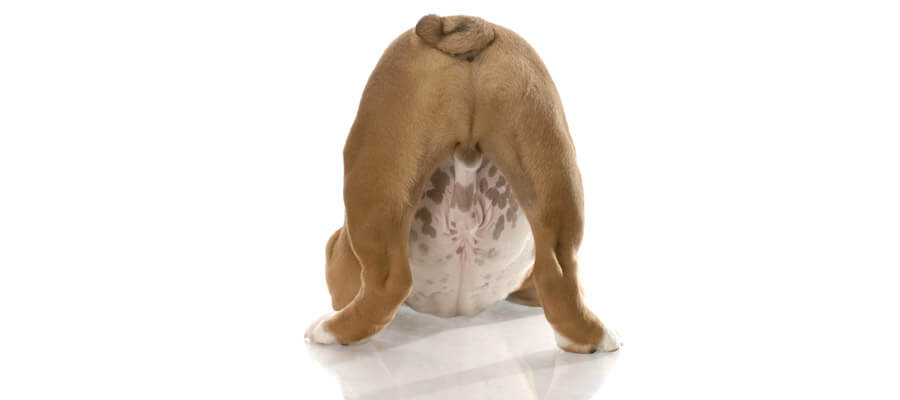Some of the things your dog does probably make you wonder, "What the poop?" Perhaps no behaviors are more perplexing than the classic butt scoot that your pup does on occasion.
Have you noticed your dog scooting on her bottom, dragging her rear end along the carpet or grass? Don't ignore the behavior—or worse, punish your dog. As with many other actions of your dog, butt scooting could point toward an underlying issue that needs your attention. Here's what the infamous bottom drag could mean.
Causes of Dogs Dragging Their Bottoms
In most cases, a dog scraping its anus along the carpet or ground means there's irritation going on. Sometimes this means your dog has an infection, it could mean there is inflammation or your dog could have worms or another issue. Grab some gloves, pull up your dog's tail, and let's get down to business. Here's how to diagnose some of the most common reasons you'll see butt scooting in dogs.
Diagnosing Common Problems
- Anal sac problems: Dogs use the smelly substances produced in their anal sacs to communicate with other dogs, as unpleasant as this can seem to their human owners. Sometimes, these sacs can become blocked, inflamed, or abscessed, meaning that they'll need to be expressed. Dogs who need anal sac expression will exhibit symptoms like swelling around the anus, problems defecating, and chewing or licking around their anus. Keep in mind that only about 10% of dogs need assistance expressing their anal sacs.
- Worms: Tapeworms can also irritate your dog's derriere. Tapeworm infestations begin when your dog swallows worm-infested fleas. You'll be able to diagnose this issue easily by noticing the tiny tapeworm segments that look like rice around your dog's anus.
- Rectal prolapse: Less commonly, your dog's rectum—the end of the large intestine—can protrude out of their anus. You'll see a mass emerging from your dog's bottom if this is the case, and warrants an immediate call to the vet.
- Wounds or tumors: If you can't determine the cause of your dog's scooting and notice some anal swelling, your dog could be dealing with a painful tumor, abscess, or internal wound. Call your vet to get an appointment.
- Fecal matter: If your dog has recently had digestive issues, there could be fecal contamination under your dog's tail. Your dog could be scooting to try to clean the area himself. A good bath and removing any soiled fur can remedy this situation.
- Itching: If your dog only seems to scoot occasionally or does it once, you can't rule out the possibility that it was just an itch.
Treatments
If your dog has been scooting around often, diagnosis at home can only get you so far. It's important to call your veterinarian if you're concerned about your dog's health. Here are common treatments for issues leading to butt scooting.
- Anal sac problems: Most owners choose to have a veterinarian or a groomer express their dog's anal glands. In rare cases, anal glands need lanced and flushed with general anesthetic.
- Worms: Tapeworms will require oral or injectable medication that your veterinarian can prescribe. To prevent tapeworms, make sure you're treating your dog for fleas routinely.
- Rectal prolapse: Call your vet right away if you suspect that your dog is experiencing rectal prolapse. Your vet will need to replace the prolapse and may need to stitch the area or even perform surgery.
- Wounds or tumors: A vet can examine your dog's anal area to check for tumors and other issues.
If you have concerns about your dog's booty scooting habit, you can contact us today or request an appointment.

